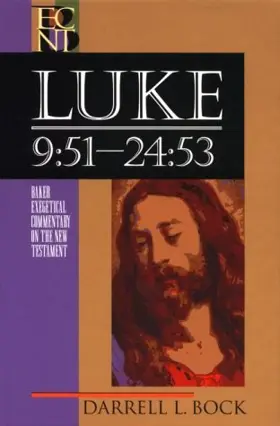

Luke 9:51-24:53
in Baker Exegetical Commentary on the New Testament
Pages
1162
Publisher
Baker Academic
Published
1994
ISBN-13
9780801010521
Reviews
Grand Rapids: Baker, 1996. Pp. xvi + 1191, Cloth, $44.99, ISBN 0801010527. Christopher R. Matthews Weston Jesuit School of Theology Cambridge, MA 02138 Darrell Bock has turned Lukan commentary into a growth industry. His volumes on Luke for the IVP New Testament Commentary (Downers Grove: InterVarsity, 1994) and the NIV Application Commentary (Grand Rapids: Zondervan, 1996) are now joined by the second volume of his treatment of the Third Gospel in the Baker series (vol. 1, 1994) in two parts: IV: Jerusalem Journey (9:51--19:44), treated in twelve subsections, and V: Jerusalem (19:45--24:53), treated in five subsections. The 1,966 pages of commentary, counting both volumes, are concluded by two excursuses, a fifty-six-page bibliography, and a 126-page index. Bock begins the treatment of each pericope in this "historical, exegetical, and pastoral commentary" with an overview, followed by a consideration of the passage's sources and historicity, with attention to Luke's agreements and disagreements with Matthew and Mark. Next he treats questions of form, presents an outline of the passage's argument, summarizes its main themes, and provides a translation. Then he engages in a verse-by-verse exegesis, and concludes with a summary that seeks to answer the question: "How did Luke want the reader to respond to this event or teaching?" Additional notes, which conclude the treatment of most pericopes, primarily deal with text-critical and grammatical matters. The overall design of the book is a plus, pleasing to the eye and serviceable to the user. The overviews, outlines, and concluding summaries provided for each pericope are set off from the rest of the text by gray shading, and the discussion of sources, historicity, and Synoptic parallels are set in smaller type to distinguish them from the main exposition.
[Full Review]
